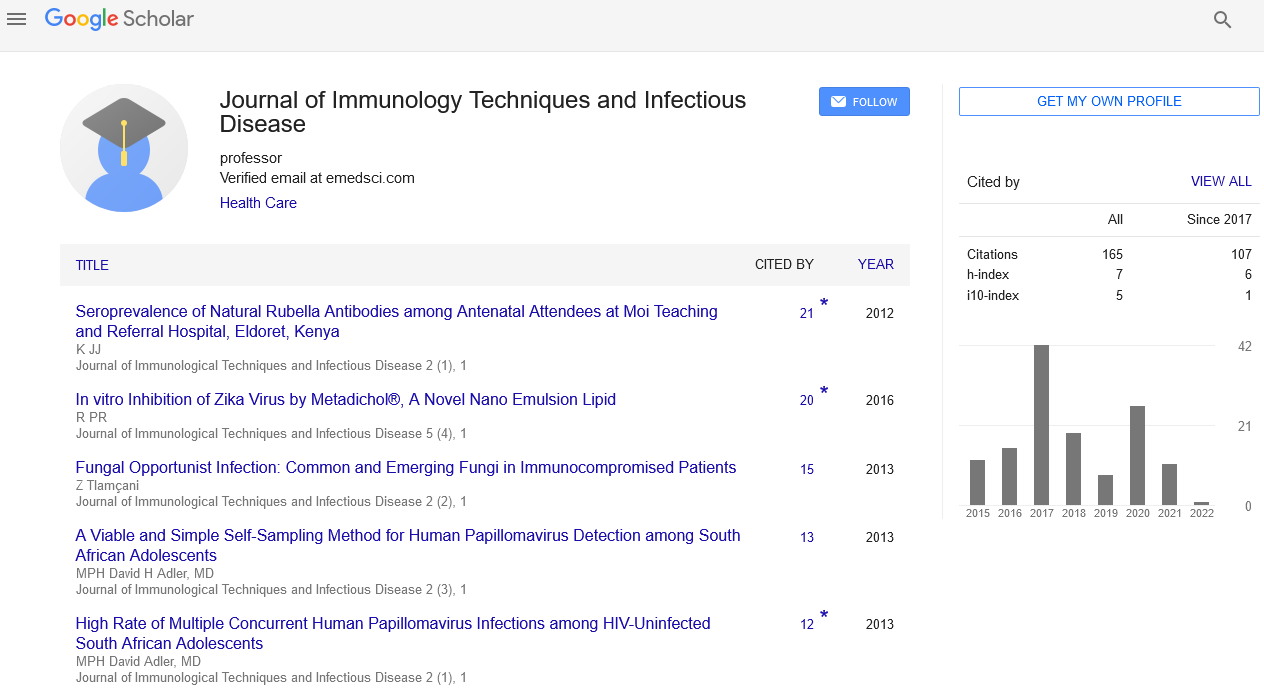Short Communication, J Immunol Tech Infect Dis Vol: 10 Issue: 5
Study of the prevalence and risk factors of the parasite (Helminthes and Protozoa) amongst labors in Al Ain district
United Arab Emirates is a multicultural country and approximately 65% of the population are expatriates from low- and middle-income developing countries that have a high burden of intestinal parasitic infections (IPI). Aim: The primary aim is to estimate the prevalence of, and factors associated with IPI in an occupational sample of expatriates in Al-Ain. Methodology: This study utilized an observational analytical cross- sectional study and recruited a representative sample of expatriate employees. Participants completed a questionnaire; and provided a fresh stool sample. Fecal specimens were analyzed for a range of IPI species using microscopy, Ziehl???Neelsen stain and polymerase chain reaction (PCR) techniques. Results: 25% of participants harbored intestinal parasites; 15% with protozoa, while 10% had helminths infection according to microscopy diagnosis. Higher incidents of protozoa and helminths infection were identified using PCR. Conclusion: IPI can be found in more than quarter of the survey population and this conclusion shed a light on the importance of this study in understanding the pattern of IPI infection and transmission in the UAE.
Abstract
United Arab Emirates is a multicultural country and approximately 65% of the population are expatriates from low- and middle-income developing countries that have a high burden of intestinal parasitic infections (IPI). Aim: The primary aim is to estimate the prevalence of, and factors associated with IPI in an occupational sample of expatriates in Al-Ain. Methodology: This study utilized an observational analytical cross- sectional study and recruited a representative sample of expatriate employees. Participants completed a questionnaire; and provided a fresh stool sample. Fecal specimens were analyzed for a range of IPI species using microscopy, Ziehl???Neelsen stain and polymerase chain reaction (PCR) techniques. Results: 25% of participants harbored intestinal parasites; 15% with protozoa, while 10% had helminths infection according to microscopy diagnosis. Higher incidents of protozoa and helminths infection were identified using PCR. Conclusion: IPI can be found in more than quarter of the survey population and this conclusion shed a light on the importance of this study in understanding the pattern of IPI infection and transmission in the UAE.
 Spanish
Spanish  Chinese
Chinese  Russian
Russian  German
German  French
French  Japanese
Japanese  Portuguese
Portuguese  Hindi
Hindi 
